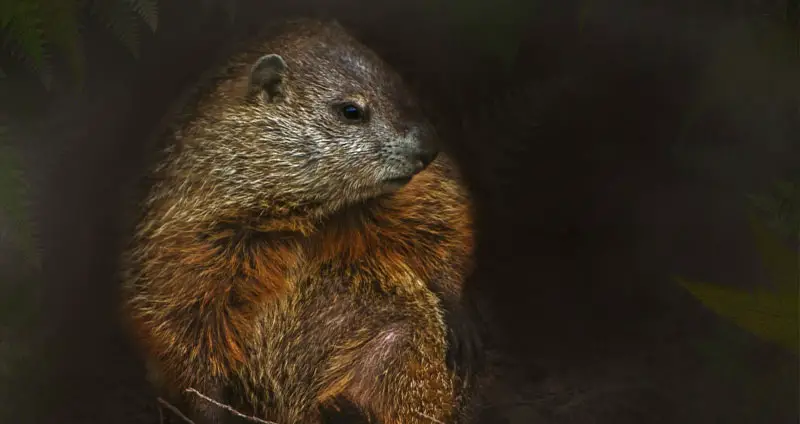Groundhogs are extremely common rodents that are found in North America (north-east and east) and most of Canada. While many people think they’re cute, an equal amount of people despise them.
These creatures are considered pests by many due to their destructive actions and large appetites for crops.
When do groundhogs do their damage, then? Are they nocturnal and feed under the cloak of darkness, or are they out and about while we are?
Table of Contents
Are Groundhogs Nocturnal?
Groundhogs are not nocturnal. Instead, they’re diurnal, meaning that they sleep at night and are active during the day from spring to fall.
While humans are also diurnal, we don’t always share the exact sleep schedule. Groundhogs can be active earlier/later depending on the time of year.
So, groundhogs are out and about during the day, eating throughout most of that time, then return to their burrow at night.
Do Groundhogs Hibernate?
Groundhogs are active during the day, so why are there long periods when these creatures aren’t seen? Do groundhogs hibernate?
Yes, groundhogs do hibernate. In fact, they’re true hibernators, meaning that they enter a period of deep sleep for several months instead of just reducing activity levels.
This hibernation period usually begins in October and ends by March. They can hibernate for as little as 3 months, though, and males hibernate for a shorter time than females.
Before hibernating, they eat a large amount of food and weigh their heaviest that they weigh all year. While hibernating, their body temperature drops as low as 35F and their heart beats 4-10 times per minute.
Groundhogs don’t just sleep entirely through the winter, though. They experience periods of torpor (very low activity) and arousal (awake and alert to use the bathroom).
When hibernation ends, the groundhogs have lost about half of their body weight. They survive off of the remaining stored fat until springtime brings warmer weather and vegitation for feeding.
Groundhog Sleep Pattern
As stated, groundhogs are diurnal and are generally active during the day and sleeping at night. However, this can vary.
Typically, groundhogs are more active during the early morning and the early evening — when the time of day is just transitioning.
This is likely because of the fact that these are the least active times for their natural predators, so it’s the safest to be out.
Groundhogs are also very solitary animals, so they prefer to be active when there aren’t any disturbances.
This means that they may be active earlier or later depending on activity levels around them. For example, if a farm is active during the morning, a groundhog may wait until later to come out and forage.
What Do They Do While Awake?
While they’re awake, groundhogs spend most of their time eating. As these are herbivores (that eat the occasional insect), they need to eat a lot of food in order to get the energy that they need.
In fat, groundhogs eat about 1/3 of their weight in vegetation every single day. With adults weighing over 10 lbs, that’s over 3 lbs of fruits, vegetables, and grasses every single day.
While foraging, these are very solitary animals. The only time that they really interact with other groundhogs is when they’re looking to mate.
However, they are open to communcation with other groundhogs, making high-pitched noises to warn others of predators.
Much of this activity is done around gardens/farms, which is why groundhogs are so widely considered as pests.

